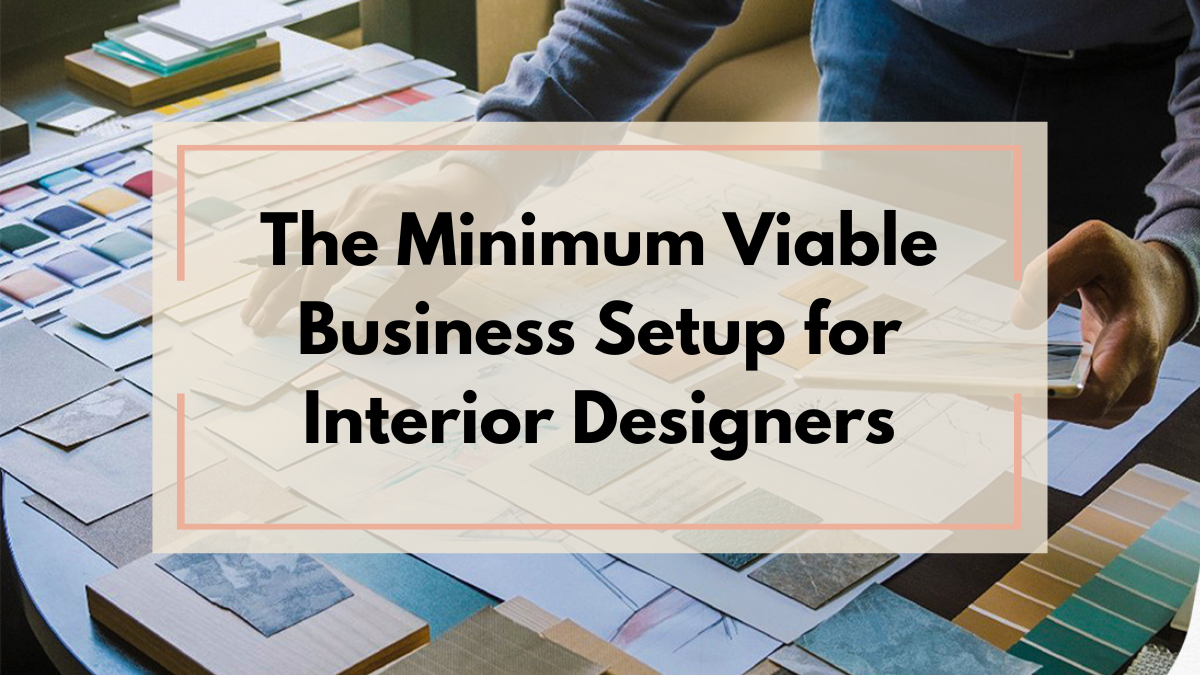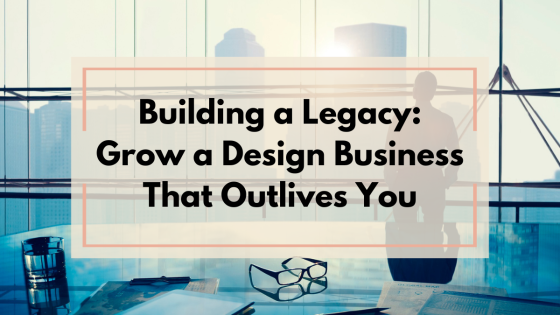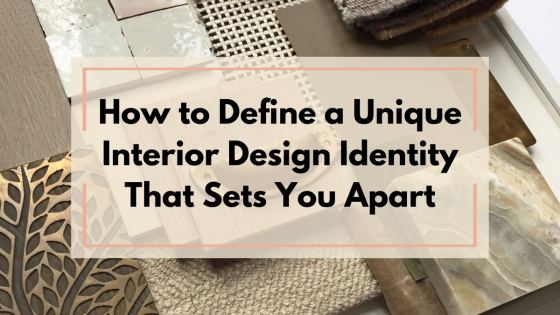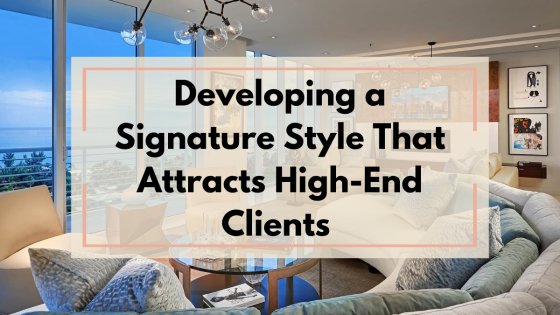The Minimum Viable Business Setup for Interior Designers

Having been in the interior design game long enough, it's easy to spot fluff from a mile away. The internet is full of flashy “business blueprint” programs that promise overnight success packed with complex funnels, shiny tools, and exhausting marketing tactics. But let’s be honest: most of that is just noise.
As someone who's already proven you can deliver stunning results for clients, you don't need another complex system to manage. What you need is clarity on the absolute essentials that actually move the needle in your business. The minimum viable business setup is about focusing your energy on the core elements that generate real revenue and sustainable growth.
Think of this as your business foundation audit. We're going to strip away everything that doesn't directly contribute to finding clients, serving them exceptionally, and getting paid well for your expertise. Because at the end of the day, those three things are what keep your business thriving, not the latest marketing trend or productivity hack.
#1: Your Core Offer: One Service, Done Exceptionally Well
Before you start thinking about scaling, you need one rock-solid service offering that you can deliver consistently and profitably. This isn't limiting yourself forever, but rather it's focused on helping you master your foundation.
Pick your strongest service area. Maybe it's full-service residential design, kitchen renovations, or staging for real estate. Whatever it is, make it your flagship offering. Define exactly what's included, what's not, and what the client journey looks like from initial consultation to project completion.
Your core offer should have a clear scope, defined timeline, and fixed pricing structure. This eliminates the back-and-forth negotiations that drain your time and helps clients understand exactly what they're investing in. When you can deliver one service exceptionally well, word-of-mouth referrals happen naturally.
Most successful designers I work with have one primary service that generates 60-80% of their revenue. Everything else is secondary. Master your core offering first, then expand strategically.
#2: Client Flow: Three Touchpoints That Actually Work
Forget complex marketing funnels. Your client flow needs just three essential touchpoints: awareness, consideration, and conversion.
- For awareness, focus on one primary channel where your ideal clients actually spend time. This might be Instagram if you're targeting younger homeowners, Houzz for renovation projects, or local networking events for high-end residential work. Don't try to be everywhere, be excellent in one place.
- Your consideration phase should showcase your expertise through case studies and client testimonials. Create a simple portfolio website with 8-10 of your best projects. Include before/after photos, brief project descriptions, and client quotes. This isn't about having the fanciest website, it's about proving you can deliver results.
- For conversion, you need a streamlined consultation process. Whether it's a discovery call, in-home consultation, or design presentation, make it easy for qualified prospects to take the next step. Have a clear process, set expectations upfront, and always follow up within 24 hours.

#3: Essential Systems: The Big Three
You only need three core systems to run a profitable interior design business: project management, client communication, and financial tracking.
- For project management, choose one platform and stick with it. Whether it's RDash, Asana, or even a well-organized spreadsheet, the key is consistency. Track project timelines, vendor communications, and deliverables in one place. Your future self will thank you when you're juggling multiple projects.
- Client communication should be centralized and professional. Use one primary method – email, a client portal, or project management software with client access. Set clear expectations about response times and communication frequency. Clients appreciate knowing when and how they'll hear from you.
- Financial tracking doesn't require complex accounting software initially. Track your income, expenses, and profit margins for each project. Know your numbers: what does it cost you to deliver your core service, and what's your target profit margin? This data guides your pricing and helps you identify which projects are actually profitable.
#4: Pricing Structure: Simple, Profitable, Defendable
Your pricing should be straightforward enough to explain in two minutes and profitable enough to sustain your business goals. Choose between flat-fee project pricing or percentage-based pricing, but be consistent.
- Flat-fee pricing works well for defined scopes like single-room designs or consultation packages.
- Percentage-based pricing (typically 20-35% of the project budget) works for larger, full-service projects where the scope might evolve.
Whatever structure you choose, build in a buffer for unexpected costs and revisions. Include payment terms in your contracts – typically 50% upfront, 25% at midpoint, and 25% upon completion. This protects your cash flow and demonstrates professionalism.
Don't compete on price. Compete on value, expertise, and results. If you're consistently the cheapest option, you're probably undervaluing your services.
#5: Client Onboarding: Set Expectations, Prevent Problems
A smooth onboarding process prevents 90% of client relationship issues. Create a simple welcome packet that includes your design process, communication guidelines, timeline expectations, and frequently asked questions.
Schedule a kickoff meeting within one week of contract signing. Use this time to review the project scope, introduce your team (if applicable), and address any immediate concerns. This meeting sets the tone for the entire project relationship.
Establish regular check-in points throughout the project. Whether it's weekly email updates or bi-weekly calls, consistent communication keeps clients informed and reduces anxiety about project progress.
684b2bd21fe05_lg.png)
#6: Legal Protection: The Non-Negotiables
You need three legal documents: a comprehensive contract, clear terms of service, and professional liability insurance. These aren't optional, they're essential business protection.
Your contract should clearly define scope, timeline, payment terms, and revision policies. Include language about what happens if the client wants to change the scope mid-project. Specify who's responsible for permits, delivery coordination, and installation supervision.
Professional liability insurance protects you if something goes wrong with a project. It's relatively inexpensive and provides peace of mind for both you and your clients.
Consider having a lawyer review your contracts initially, then use them as templates for future projects. This upfront investment saves time and potential legal headaches later.
Conclusion
Building a minimum viable business means focusing on the essentials and doing them exceptionally well, not just doing the bare minimum. You don't need every software tool, marketing channel, or business strategy that exists. You need the fundamentals working smoothly so you can focus on what you do best: creating beautiful, functional spaces for your clients.
The designers who scale successfully aren't the ones with the most complex systems. They're the ones who've mastered the basics: a clear offer, reliable client flow, efficient systems, profitable pricing, smooth onboarding, and solid legal protection. These six elements create the foundation for sustainable growth.
Start with these essentials, get them running smoothly, and then add complexity only when it directly serves your business goals. Your bank account will thank you for focusing on what actually matters. Remember, every successful interior design business starts with these fundamentals. Master them first, then build from there.
If you're interested to see exactly where your business stands? Take our Business Score Assessment to get custom insights into your five pillars and discover which areas will give you the biggest impact when strengthened. It takes just a few minutes, and you'll get a personalized roadmap for scaling your interior design business with confidence.
Thank you for reading ❤️
Categories: : Business Strategy
 Rikaza Shakeer
Rikaza Shakeer 



